70 years of the first photo of the Earth from space

The first photograph of the Earth from space was made on film on October 24, 1946 with a V-2 ballistic missile
on October 24, 1946, long before the Soviet Sputnik-1 officially opened the cosmic era for humanity, a small space gathered in the New Mexico desert Search group of American scientists and soldiers. They were given the task of finding the location of the fall of the V-2 rocket and a cassette with a 35 mm film.
People were preparing for the first time in their history to see something incredible: what the Earth looks like from space.
That day, the V-2 ballistic missile was launched from the launch pad of the White Sands Missile Range missile range in New Mexico, USA. Unlike previous launches of Werner von Braun’s rockets, the V-2 was now launched vertically.
A movie camera charged with a 35 mm film made one frame every 1.5 seconds. The rocket climbed to a height of about 105 kilometers, and then fell down, crashing into the ground at a speed of 150 meters per second. The camera was completely broken, but the film itself in the steel cassette remained intact.
The 19-year-old US Army soldier Fred Rulli was one of the members of the group.which was sent in search of October 24, 1946. The military participants of the expedition did not make a special impression. But something incredible was happening with the scientists. When they found the steel cassette untouched, they were overwhelmed with utter delight: “They jumped like children,” Rülli recalls. The sheer insanity began when the film was delivered to the launch site, showed and showed for the first time the photos on the screen: “Scientists just went crazy,” stated the private.
Until that moment, a record photo of the earth’s surface, taken from the highest altitude, had been taken from the American military helium balloon of Explorer II, which had flown into the air by 22,066 meters in 1935. High enough to fix the curvature of the globe (for the first time in the history of photography, the aeronaut Alexander Dahl filmed the curvature of the horizon on August 31, 1933).
The camera on the V-2 rocket broke the record more than five times. People saw how our bright planet looks against the darkness of space.
“The photographs showed for the first time how our Earth looks like for aliens who will arrive in a spacecraft,” said Clyde Holliday, a rocket camera designer, in a comment for National Geographic. This magazine published an article about the unique photography in 1950, when film frames were glued together into a single whole .
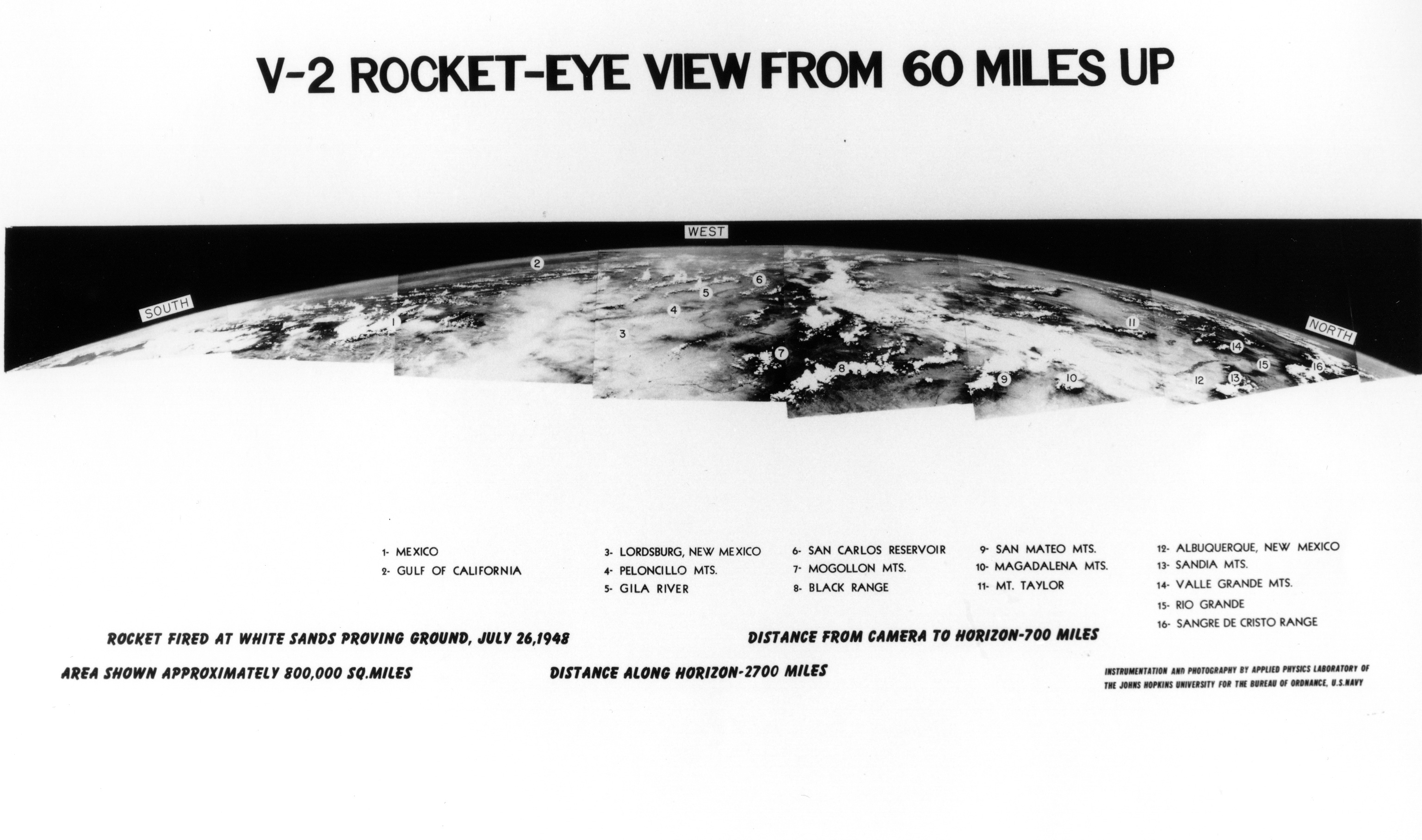
The result of the installation of frames made during the launch of the V-2 on October 24, 1946.
It was an amazing event.
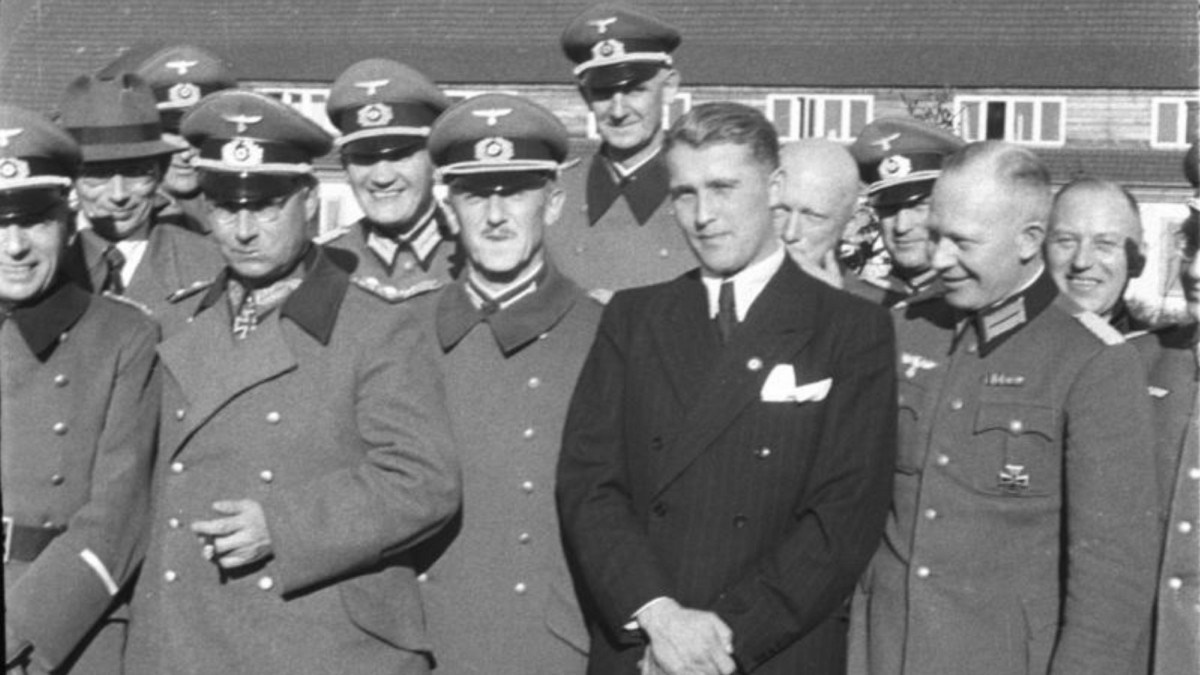
Engineer Werner von Braun (with a handkerchief in his jacket pocket).
The launch on October 24, 1946 was one of many experiments in the V-2 research program conducted by a group of engineers led by Werner von Braun, who after the war was transferred to work in the US as part of operation " Clip". For them, the United States Intelligence Objectives Agency (JIOA) created fictitious biographies and removed references to NSDAP membership and links to the Nazi regime from public records. The general public learned about this secret operation by chance in December 1946, when chief design engineer Walter Riedel became the hero of a published article “The German scientist claims that American food is tasteless, and chicken looks like rubber.”
From 1946 to 1950, thanks to the launches of the V-2, the Americans made more than 1,000 photographs of the Earth from a height of up to 160 km.
Video recording launch "V-2" November 21, 1946
The famous German engineer Werner von Braun began working on a liquid-fuel rocket in 1930. Professor Herman Oberth , who is called one of the six founders of modern rocket and astronautics, along with Konstantin Tsiolkovsky and Yuri Kondratyuk, had a key influence on him (and in the early twentieth century Kondratyuk calculated the optimal flight path to the Moon, which NASA later used in the Apollo lunar program ) By Friedrich Zander , Robert Hainault Peltri and Robert Goddard .
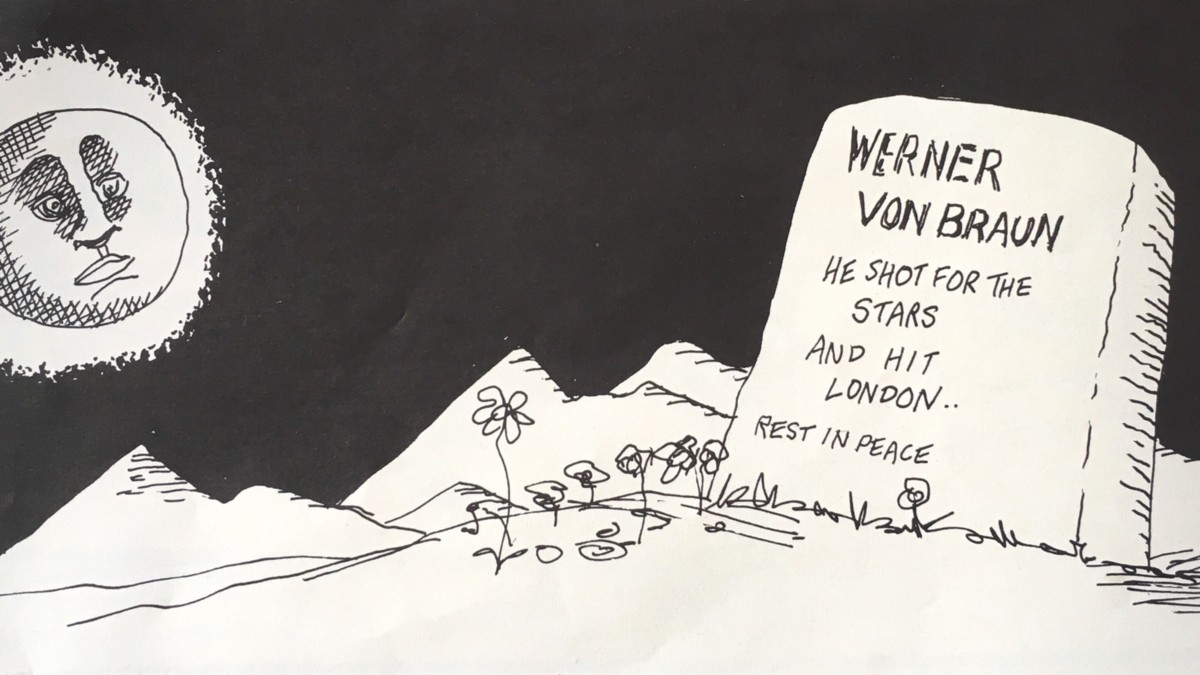
Werner von Braun later recalledabout his mentor: “Herman Oberth was the first to think about the possibility of creating spaceships, took a slide rule and presented mathematically sound ideas and designs ... Personally, I see in him not only the guiding star of my life, but also owe him my the first contacts with theoretical and practical issues of rocket production and space flight. "
After the launch of the first satellites, photography of the Earth became one of the main tasks of state and then private programs. Earth was filmed not only from satellites, but also from other spacecraft. For example, launched on September 12, 1966, the American manned spacecraft Gemini-11 took a picture from a height of 1,368 km.
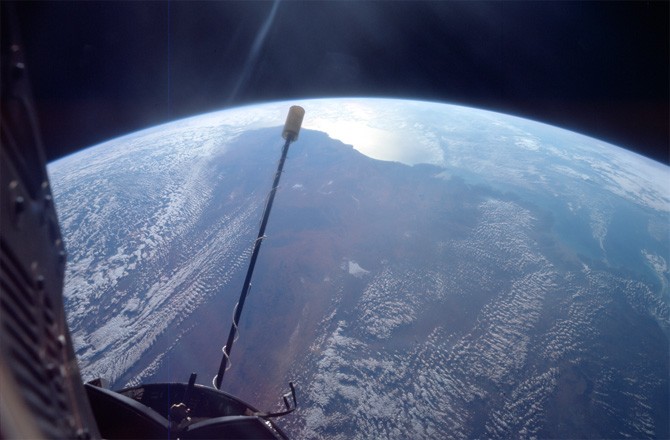
Photo from "Gemini-11"
Three years later, in July 1969, the crew of the Apollo 11 took the famous photograph of the Earth above the horizon of the moon. The picture was taken from the lunar orbit from a distance of about 400,000 km from Earth.
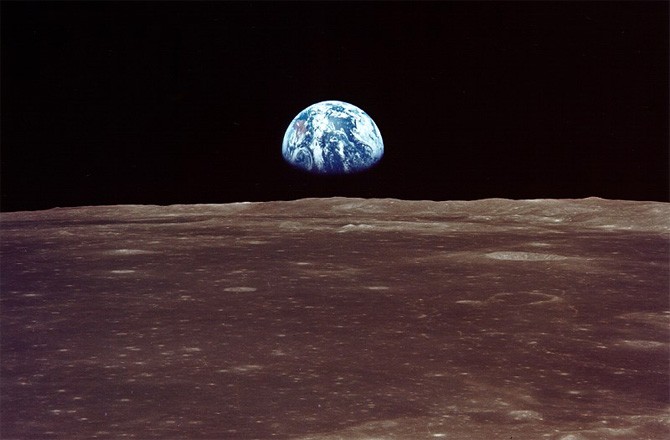
Photograph from Apollo-11
Another scale of the Earth is shown in the photo, which the Apollo-15 crew took on July 26, 1971.
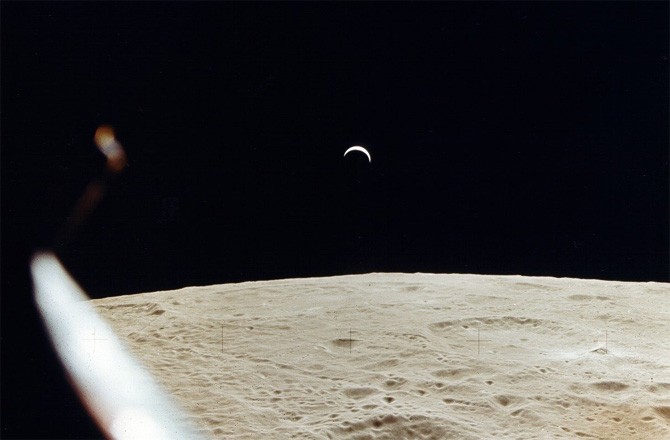
Photograph from Apollo-15
Every decade, our spacecraft were moving farther and farther into space, exploring the vastness of the solar system. On November 3, 1973, NASA launched the Mariner 10 automatic interplanetary station, the first successful launch in the Mariner series. She was the first to visit Mercury on March 29, 1974. On the way to Mercury, the device took a photograph of the Earth and the Moon from a distance of 2.57 million km, having first photographed them together.
Perhaps the most remarkable photograph of Earth was made by the Voyager-1 probe on June 6, 1990, ten years after the start of its journey.

Photo of the Earth from Voyager-1 (distance 6.05 billion km).
This picture went down in history as Pale Blue Dot .
